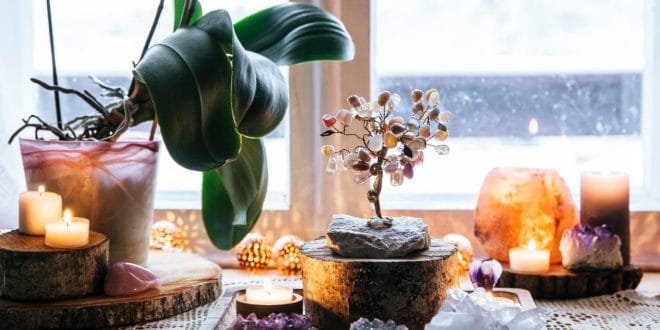Color is more than just decoration—it has the power to influence your mood, energy, and well-being. In feng shui, colors are closely tied to the five elements (wood, fire, earth, metal, and water) and are used to create balance and harmony in your living space. By choosing colors that align with the energy you want to cultivate, you can enhance areas of your life, including relationships, health, career, and finances.
In this article, I’ll guide you through the best colors to use in different rooms of your home based on feng shui principles. Whether you want to create a calming retreat or an energizing workspace, the right colors can help you achieve your goals.
Understanding the Five Elements and Their Colors
Feng shui is based on the principle of balancing the five elements. Each element is associated with specific colors that influence energy in your space. Here’s a quick breakdown:
| Element | Colors | Energy | Associated Areas |
|---|---|---|---|
| Wood | Green, Brown | Growth, vitality | Wealth, family |
| Fire | Red, Orange, Pink, Purple | Passion, motivation | Fame, recognition |
| Earth | Yellow, Beige, Earth tones | Stability, grounding | Health, relationships |
| Metal | White, Gray, Metallic shades | Clarity, focus | Productivity, creativity |
| Water | Blue, Black | Flow, intuition, abundance | Career, wisdom |
By understanding how these elements interact with your space, you can choose colors that create the right balance of energy for each room.
Choosing Colors for Each Room in Your Home
Let’s explore how to apply feng shui color principles to different areas of your home.
1. Living Room: Create a Welcoming and Balanced Space
The living room is where family and friends gather, so it should feel warm, inviting, and balanced. You’ll want to use a mix of colors to promote both relaxation and lively conversation.
Recommended Colors:
- Earth tones (beige, brown, soft yellows) for stability and warmth
- Green to symbolize growth and vitality
- Warm accents (red, orange) to energize the space
Example: A living room with beige walls, green plants, and red throw pillows creates a harmonious blend of grounding and uplifting energy.
Tip: Avoid overwhelming the room with too much of one bold color, as it can create imbalance.
2. Bedroom: Promote Rest and Intimacy
Your bedroom is your sanctuary for rest and rejuvenation, so it should have a calming and peaceful atmosphere. Soft, soothing colors are ideal for promoting sleep and relaxation.
Recommended Colors:
- Soft blues and greens to create a calming effect
- Earthy tones (beige, cream, light brown) for grounding
- Warm pinks and gentle reds to enhance intimacy and romance
Example: Pale blue walls with cream-colored bedding and a hint of blush pink in decorative accents can help create a serene and inviting bedroom.
Tip: Avoid overly bright or bold colors like red or orange in large amounts, as they can be too stimulating for sleep.
3. Kitchen: Nourish Energy and Vitality
The kitchen is the heart of the home, symbolizing nourishment and abundance. You’ll want to use colors that encourage warmth, activity, and connection while maintaining a sense of cleanliness and order.
Recommended Colors:
- Warm earth tones (yellow, beige) to promote nourishment and stability
- Green to symbolize fresh, healthy energy
- Red accents to stimulate appetite and conversation (but use sparingly)
Example: A kitchen with soft yellow walls, green plants, and red kitchenware can encourage a lively, welcoming atmosphere.
Tip: Keep the space organized and clutter-free to maintain positive energy flow.
4. Bathroom: Maintain Balance and Purity
Bathrooms can be challenging in feng shui because they involve draining water, which can symbolize loss of energy. The goal is to create a clean, refreshing space that balances water with grounding elements.
Recommended Colors:
- Light blues and greens to enhance the water element
- White for cleanliness and purity
- Earth tones (beige, light brown) to create stability and grounding
Example: A bathroom with white tiles, light blue accents, and natural wood elements creates a refreshing yet balanced environment.
Tip: Avoid excessive use of dark colors, which can make the space feel heavy or overwhelming.
5. Home Office: Boost Focus and Productivity
Your home office should support productivity, creativity, and mental clarity. Colors that promote focus and inspiration are key.
Recommended Colors:
- White and gray to encourage clarity and focus
- Blue to promote calm, clear thinking
- Green to boost creativity and growth
Example: A home office with white walls, a green plant on the desk, and gray or metallic accents can enhance productivity and focus.
Tip: Add a splash of color (e.g., yellow or orange) in small doses to spark creativity and motivation.
6. Dining Room: Foster Connection and Appetite
The dining room is a space for nourishment and connection. Warm, earthy colors can create an inviting atmosphere that encourages conversation and enjoyment of meals.
Recommended Colors:
- Warm earth tones (beige, soft yellow) for grounding and comfort
- Red or orange accents to stimulate appetite and social interaction
Example: A dining room with beige walls, a wooden dining table, and red or orange tableware can promote warmth and togetherness.
Tip: Avoid overly cool colors like blue or gray, as they may suppress appetite.
7. Entryway: Welcome Positive Energy
The entryway is the first area visitors and energy encounter when entering your home. It should feel open, bright, and welcoming to invite positive chi.
Recommended Colors:
- Warm, neutral tones (beige, cream) to create a welcoming atmosphere
- Green or plants to symbolize new beginnings and growth
- Bright accents (yellow, red) to attract positive energy
Example: An entryway with cream-colored walls, a potted plant, and a cheerful yellow rug can make both you and your guests feel uplifted upon entering.
Tip: Keep the area clean and uncluttered to allow energy to flow smoothly into your home.
Tips for Balancing Colors in Feng Shui
- Avoid Overuse of One Color: Too much of a single color can create imbalance. Use complementary colors to maintain harmony.
- Incorporate the Five Elements: Make sure your space includes a balance of wood, fire, earth, metal, and water elements to promote well-being.
- Use Accent Colors Mindfully: If a bold color like red feels overwhelming, use it in smaller accents (e.g., pillows, artwork) rather than as a dominant color.
- Trust Your Intuition: Pay attention to how different colors make you feel. Your personal connection to colors is just as important as feng shui guidelines.
Choosing colors based on feng shui principles can transform your home into a space that supports your well-being, goals, and relationships. By aligning the colors of each room with the energy you want to cultivate, you can create a harmonious environment that feels both uplifting and grounding.
Start by making small adjustments—whether it’s adding a plant for vitality or painting a wall a calming shade—and notice how the energy in your home shifts. With the right colors, you’ll be well on your way to creating a balanced and joyful living space.
What colors are you excited to incorporate in your home? Let us know in the comments!
 Lifeved The Keys to a Better
Lifeved The Keys to a Better


 by
by